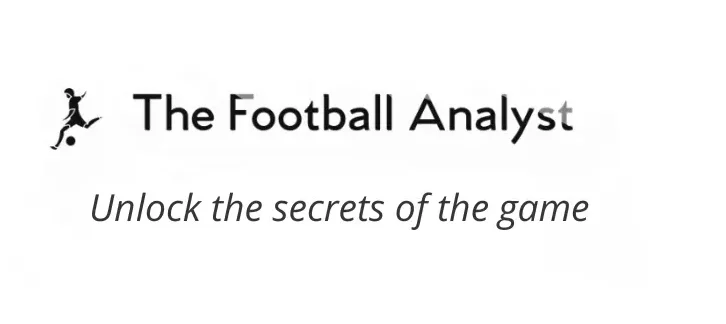In a football landscape increasingly dominated by billion-euro budgets, global brand power, and state-backed superclubs, the success of smaller teams in the transfer market stands out as both a tactical and financial triumph. These clubs don’t rely on fortune or miracles. Instead, they follow a strategic model — one rooted in data, efficiency, and long-term planning. This is the essence of football’s Moneyball revolution.
Popularized by Billy Beane’s work with the Oakland A’s baseball team, the Moneyball concept centers on identifying undervalued assets through data. In football, this model has evolved into a detailed recruitment philosophy: blend analytics with traditional scouting, target system-specific profiles, and maximize both development and resale value. Today, clubs like Brentford, Union Saint-Gilloise, Red Bull Salzburg, and Bodø/Glimt are proving that success isn’t about spending more — it’s about spending smarter.
What Is the Moneyball Approach in Football?
At its core, football’s Moneyball strategy is about exploiting market inefficiencies. It’s about finding players others overlook, understanding the value behind numbers, and aligning every signing with a club’s tactical and financial goals.
Rather than building squads around hype or reputation, these clubs prioritize fit, potential, and performance data. They make decisions based on evidence and consistency — not emotion or pressure. And because every signing carries weight, their margin for error is minimal. Smart structures and processes are critical.
The Key Pillars of the Moneyball Blueprint
Exploiting Market Inefficiencies
Smaller clubs can’t compete financially with elite teams — so they look elsewhere. They scout undervalued markets:
- Scandinavia, West Africa, the Balkans, Eastern Europe
- Lower divisions in France, Germany, or England
- Academies of big clubs where talented players are released early
- Players with stylistic mismatches, injury histories, or positional undervaluation
FC Midtjylland has built a strong track record by targeting players who excel in underappreciated areas like set pieces and aerial duels. They structure their model around finding value where others don’t.
Data-Informed, Not Data-Driven
Smart clubs don’t replace scouting with spreadsheets — they enhance it. Data is used to filter, compare, and highlight patterns. Then human scouts step in to assess contextual fit.
Brentford is the perfect case study. Players like Ivan Toney and Ollie Watkins were signed not because of raw output alone, but due to deeper indicators like xG per shot, ball retention under pressure, and pressing work rate — all of which fit their game model.
Player Trading as a Revenue Model
The transfer market isn’t just about building squads — it’s a major revenue stream. Clubs like Red Bull Salzburg and Brighton treat player trading as a business strategy.
Salzburg, for example, sign young, athletic, tactically flexible players and puts them into a clear development pathway. The system showcases their strengths and accelerates their growth. Then they sell — at massive profit. Think Erling Haaland, Dominik Szoboszlai, Karim Adeyemi, and now Oscar Gloukh.
Recruitment Built Around the System
Moneyball clubs don’t just sign good players — they sign the right players. Each recruitment decision is made with a tactical identity in mind. What matters most is how a player fits into the team’s structure.
Union Saint-Gilloise focus on aggressive pressing, fast transitions, and vertical play. So they sign players who can execute that — dynamic wing-backs, hard-working forwards, and combative midfielders. Every signing fits the puzzle.
Mentality and Adaptability Matter
Talent isn’t enough. Many talented players fail due to poor mentality, weak adaptability, or poor lifestyle fit. That’s why the best recruitment models also include psychological and cultural profiling.
AZ Alkmaar and Bodø/Glimt place strong emphasis on character — not just skill. Players are assessed on their learning capacity, team behavior, and adaptability. The result? A more stable, cohesive squad — and fewer flops.
Real-World Examples: Who’s Getting It Right?
Brentford FC
Closed their academy in 2016 to focus entirely on their B Team and data-driven model. Signed undervalued players from lower leagues and turned them into Premier League regulars. Ollie Watkins, Saïd Benrahma, Neal Maupay, Ivan Toney — all prime examples of buying low, developing well, and selling (or retaining) smartly.
Union Saint-Gilloise
Owned by Brighton’s Tony Bloom, Union SG have built a system-based recruitment operation that targets undervalued leagues like Ligue 2 and the Eerste Divisie. With a defined tactical model and a fearless playing style, they’ve qualified for Europe and challenged Belgium’s top clubs.
Red Bull Salzburg
Combines elite scouting, youth development, and consistent system alignment. Their tactical setup showcases pace, pressing, and verticality — perfect for young players looking to break out. Their track record of player sales rivals any club in Europe.
Bodø/Glimt
A club from northern Norway with a tiny budget but an enormous footballing brain. Known for their attacking 1-4-3-3 system, they target technical players who can thrive in expansive roles. They develop players fast, win domestically, and compete in Europe — all on a shoestring budget.
The Risks of the Model
Despite its strengths, the Moneyball approach carries risk. Overreliance on player sales can be dangerous in a down market. High player turnover can impact chemistry. And success often leads to your best players — and staff — being poached.
Moreover, as more clubs adopt similar models, the market becomes more efficient — and therefore harder to exploit. Clubs must constantly evolve, tweak their strategy, and innovate their scouting methods.
Why This Matters
The modern football transfer market is inflated, reactive, and emotionally driven. But a growing number of clubs are proving there’s a better way. You don’t need to outspend your rivals — you need to outsmart them.
The Moneyball blueprint works because it’s built on principles: discipline, alignment, system fit, and long-term thinking. For smaller clubs, it’s not just a competitive edge — it’s a survival strategy. And when executed well, it can also be a pathway to the top.
